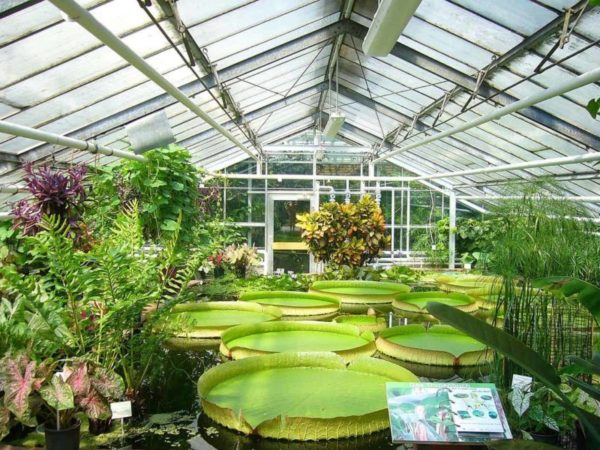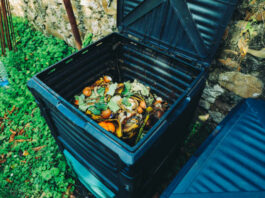Maintaining a greenhouse is a massive difficulty if you are unaware of its whereabouts and maintenance norms. One such essential aspect is heating for a greenhouse, which needs to be proper and adequate to ensure the appropriate temperature control.
There are several reasons why knowing how to heat a greenhouse with solar panels may benefit your gardening efforts:
- One, it’s cheaper. Unlike the national grid, where you face astronomical power bills, solar energy is a gift from nature
- Then, solar is considered environmentally friendly and reduces your carbon footprint
- It’s very reliable. At no point will you experience cases of power blackouts or brownouts, meaning you can bet on it to save your plants all the time
Types of Greenhouse Solar Heating Systems
For a start, you need some solar panel greenhouse kits.
Then, you’ve to choose between working with either an active or a passive solar heating system.
- Active Solar Greenhouse Heating – These types use fans, blowers, and pumps to improve heat distribution throughout the greenhouse.
- Passive Solar Greenhouse Heating – A passive system doesn’t have anything electrical within it–the whole process from heat collection to eventual circulation naturally occurs.
How To Heat a Greenhouse With Solar Panels?
Now lets’ try to know how do solar greenhouse heating systems operate?
The whole idea is about capturing and storing heat from the sun and releasing it to your seedlings when they’re freezing.
For this to work, there are several essentials:
- Thermal Mass – Solar heated greenhouses rely on a thermal mass for proper functioning. A thermal mass is any material that soaks up the heat during the day, holds it, and then releases it to plants at their hour of need, mostly at night when they are most likely to be freezing. The most popular method for storing absorbed solar energy is either to place rocks, water, or concrete facing the sunlight directly to absorb maximum heat.
- Glazing – You’ll also need clean glazing. And, in plenty. That is the secret to maximizing insulation – the process of drawing heat energy naturally from the sun. Glazing materials used for all solar greenhouses should permit maximum solar energy passage into your greenhouse while reducing energy loss. You can use Glass, Polyethylene, Acrylics, or other plastics as the glazing material. As a rule of thumb, your solar greenhouse should have an estimated 0.75 – 1.5 sq. ft. of glazing per square foot (of floor space).
- Solar Panels – Solar panel kits for greenhouses are usually made from silicon. They, however, vary in efficiency as well as price.
Here are the three dominant types –
- Mono-Crystalline Solar Cells: These are manufactured from single crystalline silicon. They are dark in color and look like a cylinder. To minimize costs and maintain performance at optimal levels, manufacturers cut off these solar cells’ four sides, hence their recognizable appearance. Overall, they are the most efficient solar panel kits for greenhouses.
- Polycrystalline Cells – Unlike their monocrystalline counterparts, polycrystalline cells retain their four sides. Silicon is typically melted and then poured into square-shaped molds, forming perfect square shapes.
- Thin-Film Solar Cell – These are created by positioning several light layers of photovoltaic material on each other to make the cells needed to complete a module.
Solar Panel Kits for Greenhouses Reviews
- ECO-WORTHY 200 Watt Greenhouse Solar Panel KitThis is one of the most durable solar panel greenhouse heating kits. It will withstand storms, snow loads and will never rust, all these being made possible by its sturdy aluminum frame. The kit comprises two 100 watt panels that combine to recharge connected batteries within a short time. And you can also use it to charge your DC lamp and your phone. Moving on, as you would expect with a top-rated greenhouse solar panel, it has an overcharge regulator, so it hardly overcharges batteries meaning your batteries will give you service for decades. It also protects against overload, Short-circuiting, Under-voltage, and Reverse polarity. All in all, it's one of the best in the business.
- Renogy 100 Watts Eclipse MonocrystallineThis comes as 2 100 watts solar panels hence can attain a maximum of 200 watts. Once mounted, it continues to deliver a significant amount of heating even in darkened environments. Then, it comes with a robust, adjustable, corrosion-resistant aluminum stand. And don't forget it also has a heavy-duty handle and holding latches, so you are assured of long service. To avoid overcharge, it's fitted with a highly effective 4-stage charging controller, which perfectly complements other safety features, including a temperature sensor plus a battery sensor. Still, on batteries, it's known to work with a wide range of batteries including sealed, gel, and flooded batteries.
- Giosolar 100W 12V Monocrystalline Solar PV PanelGiosolar solar panels are also constructed using highly efficient Mono-crystalline solar cells. They, therefore, produce a higher charge per module than most of the competition. Because of its unique construction, this solar PV panel is considered a premier industrial-grade module and is very popular with leading greenhouse solar heating experts.
- 400 Watts, Solar Panel Kit with MPPT Charge Controller (20A), Solar Combiner, Solar CableSince polycrystalline cells have reduced output rates, they are the best for gardeners in warmer areas. The 400 watts greenhouse solar panel kit is one of the best polycrystalline solar panel kits because it comes with some of the essential solar heating elements, including a combiner, a solar cable adapter, a 20A charge controller, and friendly Z mounting brackets. Its design is such that it will optimize the wiring through the entire system to enhance its power efficiency.
Factors to Consider When Buying Solar Panel Kits For Greenhouses
When choosing solar panels for your greenhouse, you need to be more careful to identify the best possible product.
Here are some considerations;
- The Size of Your Greenhouse: The system you will install will depend on the size of your greenhouse will need more powerful panels.
- What Will Be Growing: Each crop needs a specific level of heating. Be sure to choose a choice that can supply enough warmth to your plants.
- Presence of Useful Controls: Controls such as overcharging controllers, mounting brackets, and temperature sensors make your panel more reliable and safe and may sway my opinion.
- Ease of Installation: A solar panel kit should provide for direct mounting.
- Versatility: Some panels are built so that you can also mount them on a cabin, a boat, or an uneven surface.
How to Maximize Your Greenhouse Solar Panels?
Here are some tips you can employ to make your greenhouse solar heating panels more efficient:
- Your panels should be facing south
- They should be mounted at an angle to receive maximum sunlight
- Your greenhouse should be thoroughly insulated
- Your panels should not be covered by shade
- Add panels when necessary.
Wrapping Up
Knowing how to heat a greenhouse with solar panels can drastically reduce your greenhouse heating cost.
Also, solar energy is environmentally safe and also very reliable.
When installing a solar greenhouse heating system, you will need solar panel kits for greenhouses, a thermal mass, and glazing material.
If you feel we missed something, kindly contact us or drop us a comment.
Last update on 2023-04-18 / Affiliate links / Images from Amazon Product Advertising API








